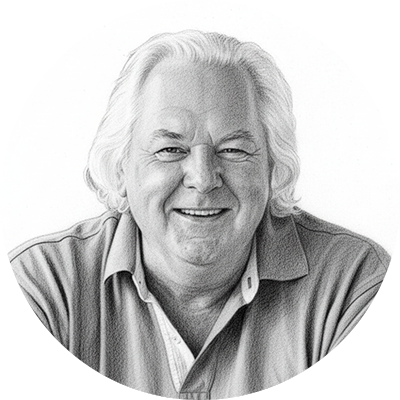Dreaming to Postpone the End of the World
A spiritual psychology plan that applies ancient secrets of Dreamtime to our contemporary world.
by Robert Moss
The idea that soul or consciousness survives death and enters an afterlife is the source of religions and is shared by most human cultures. It is born in dreams, specifically in the experience of traveling beyond the physical body while it is dormant in sleep or trance or meditative states. If we are looking for more of our soul and our soul’s purpose in life, the first place to look is in dreams. Unfortunately, many in modern society are bereft of dreams, unable to remember or unwilling to share visions of the night.
Indigenous dreaming societies hold the lack of dreams to be a very serious illness. If you have lost your dreams, they say, it may be because you have lost a vital part of your soul, the beautiful bright dreamer who went away when the world seemed too cold or cruel. Dream loss is soul loss, which may be a communal and collective problem, as well as a personal one.1
Across history, most societies have recognized the vital importance of dreaming and have honored dreams and dreamers, for three main reasons. They have seen dreaming as a field of interaction between humans and the more-than-human: with gods and daimons, with ancestors and nature spirits, with a greater Self. They have recognized that dreaming is traveling, and that we travel across time into the future and see events that lie ahead in ways that can enable us to prepare for things that are otherwise unknown. An elder of the Kwakiutl told Franz Boas that “dreams are the news the soul brings us when it comes back from its journeys.”2 And most cultures have understood that dreaming may also be medicine; dreams diagnose our physical, emotional, and mental health, and show us the state of our souls — and may offer remedies and even direct ministration by a sacred healer.
In our valuation of dreaming and our understanding of soul, we have fallen from the knowledge and practice of the original masters of this field — the paleolithic dream shamans, who stepped in and out of the dreamworlds as easily as we step in and out of a room, guided souls on their roads on both sides of death, negotiated with spirits and scouted across time and space to keep people safe. We have lost the maps to the Otherworld and the keys to places of healing, initiation, transformation — and wild adventure — beyond the fields we know. In the Indigenous mind, a dreamworld is a real world; the Mardu of the Western Desert in Australia say it is “really real.”3
All this was very much in Jung’s mind when he issued a passionate call, a century ago, for a spiritual psychology, a psychology with soul. Mocking some of his scientific colleagues, he wrote,
We have now discovered that it was intellectually unjustified presumption on our forefathers’ part to assume that man has a soul; that that soul has substance, is of divine nature and therefore immortal; that there is a power inherent in it which builds up the body, supports its life, heals its ills and enables the soul to live independently of the body; that there are incorporeal spirits with which the soul associates; and that beyond our empirical present there is a spiritual world from which the soul receives knowledge of spiritual things whose origins cannot be discovered in this visible world.4
Jung then declared,
General conceptions of a spiritual nature are indispensable constituents of psychic life. Their relative absence or their denial by a civilized people is therefore to be regarded as a sign of degeneration. Whereas in its development up to the present psychology has dealt chiefly with psychic processes in the light of physical causation, the future task of psychology will be the investigation of their spiritual determinants.5
The core techniques of Active Dreaming, my original synthesis of dreamwork and shamanism, respond fully to Jung’s challenge. The whole approach is founded on the recognition that dreams are not only the language of the soul but experiences of soul and that dreamwork is a way to bring more soul into the body and into life.
Active Dreaming offers three core areas of practice.
First, Active Dreaming is a way of talking and walking our dreams, of bringing energy and guidance from the dreamworld into everyday life. We learn how to create a safe space where we can share dreams of the night and dreams of life with others, receive helpful feedback, and encourage each other to move toward creative and healing action.
We discover that each of us can play guide for others, and that by sharing in the right way, we claim our voice, grow our power as storytellers and communicators, build stronger friendships, and lay foundations for a new kind of community. Above all, we learn to take action to embody the energy and guidance of our dreams in everyday life.
Like Jung, we are fond of drawing and painting from dreams — and also of turning them into theater and performance. We find that offering such social rewards for dream sharing encourages dream recall — everyone wants to bring something to the table.
Second, Active Dreaming is a method of shamanic lucid dreaming. It starts with simple everyday practice and extends to profound group experiences of mutual interactive dreaming, time travel, soul recovery, and the exploration of multidimensional reality. It is founded on the understanding that we don’t need to go to sleep in order to dream. The easiest way to become a conscious or lucid dreamer is to start out lucid in the liminal hypnagogic state and stay that way.
Third, Active Dreaming is a way of conscious living. It involves awakening to the fact that — as Aboriginal Australians say — we live in the Speaking Land, where everything is alive and will speak to us if we pay attention. It is about navigating by synchronicity and receiving chance events and symbolic pop-ups in the dream of everyday life as clues to a deeper order.
Active dreamers become Speakers for the Earth and rise to full awareness of the truth of the Indigenous wisdom that we must be mindful of the consequences of our actions down to the seventh generation beyond ourselves. Active dream groups offer a model of intentional community and provide precious islands of coherence in a crazy world.
Which brings me to this further message from Indigenous wisdom: “You have to dream to postpone the end of the world,” Brazilian Indigenous activist and philosopher Ailton Krenak declares.
For some people, to dream is to step outside of reality, relinquish the practical meaning of life. For others, however, there is no meaning to life unless informed by dreams, the place we go in search of songs, cures, inspiration, and even solutions to practical problems that befuddle and elude us in the daytime, but which are laid out in all their possibilities in the realm of dream.6
Now this is a plan for a spiritual psychology that applies the ancient secrets of the Dreamtime to our contemporary complaints.
Do you find it hard to remember dreams? Look for suggestions here.
Robert Moss is the creator of Active Dreaming, an original synthesis of dreamwork and shamanism. He is a New York Times bestselling novelist and his many books on dreaming include Conscious Dreaming, The Secret History of Dreaming, and Dreaming the Soul Back Home. He has led many popular online courses for The Shift Network as well as a three-year training for teachers of Active Dreaming. His website is http://mossdreams.com
Iroquois elders told ethnologist Harriet Converse that you can lose your soul if you don’t listen to what it is telling you in your dreams. The punishment for ignoring repeated dream warnings is that the “free soul” may abandon the dreamer, leaving the afflicted person to live out life as one of the walking dead, “bereft of their immortal soul.” Robert Moss, Dreamways of the Iroquois. Rochester VT: Destiny Books, 2004, p.38.
Franz Boas,”Ethnology of the Kwakiutl” in F. W. Hodge (ed.) Thirty-fifth annual report of the Bureau of American Ethnology to the Secretary of the Smithsonian Institution. Government Printing Office, 1921, pp. 724-725.
Robert Tonkinson, “Dream-spirits and innovation in aboriginal Australia’s western desert” in International Journal of Transpersonal Studies, vol. 32 no.1 (2013), p.137.
C.G. Jung, “The Basic Postulates of Analytical Psychology” in Modern Man in Search of a Soul. New York: Harcourt Harvest, 1933. p.176.
Ibid., p.194.
Ailton Krenak. Ideas to Postpone the End of the World. trans. Anthony Doyle. Toronto: Anansi Books, 2020.



